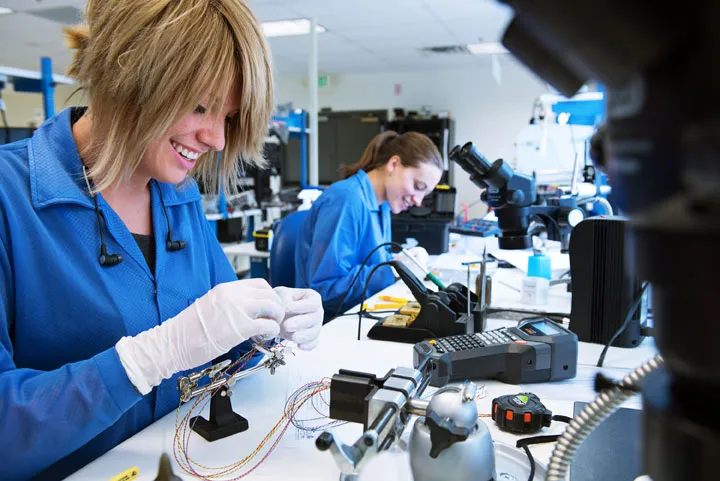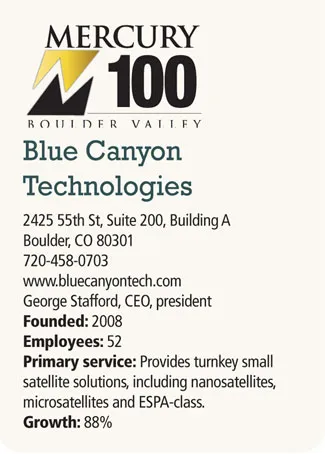Small satellites help Blue Canyon Technologies soar
Mercury 100 Boulder Valley

![]() The success trail for Blue Canyon Technologies sounds something like the chicken-and-egg story, with technology playing the part of the chicken. Or maybe it’s the part of the egg. That’s the twist, right?
The success trail for Blue Canyon Technologies sounds something like the chicken-and-egg story, with technology playing the part of the chicken. Or maybe it’s the part of the egg. That’s the twist, right?
 Ten years ago, the technology that currently drives Blue Canyon wasn’t around. The reason the company is doing so well today is because companies that use Blue Canyon’s products exist — and, of course, those companies wouldn’t exist if Blue Canyon’s technology wasn’t available.
Ten years ago, the technology that currently drives Blue Canyon wasn’t around. The reason the company is doing so well today is because companies that use Blue Canyon’s products exist — and, of course, those companies wouldn’t exist if Blue Canyon’s technology wasn’t available.
You…
THIS ARTICLE IS FOR SUBSCRIBERS ONLY
Continue reading for less than $3 per week!
Get a month of award-winning local business news, trends and insights
Access award-winning content today!
